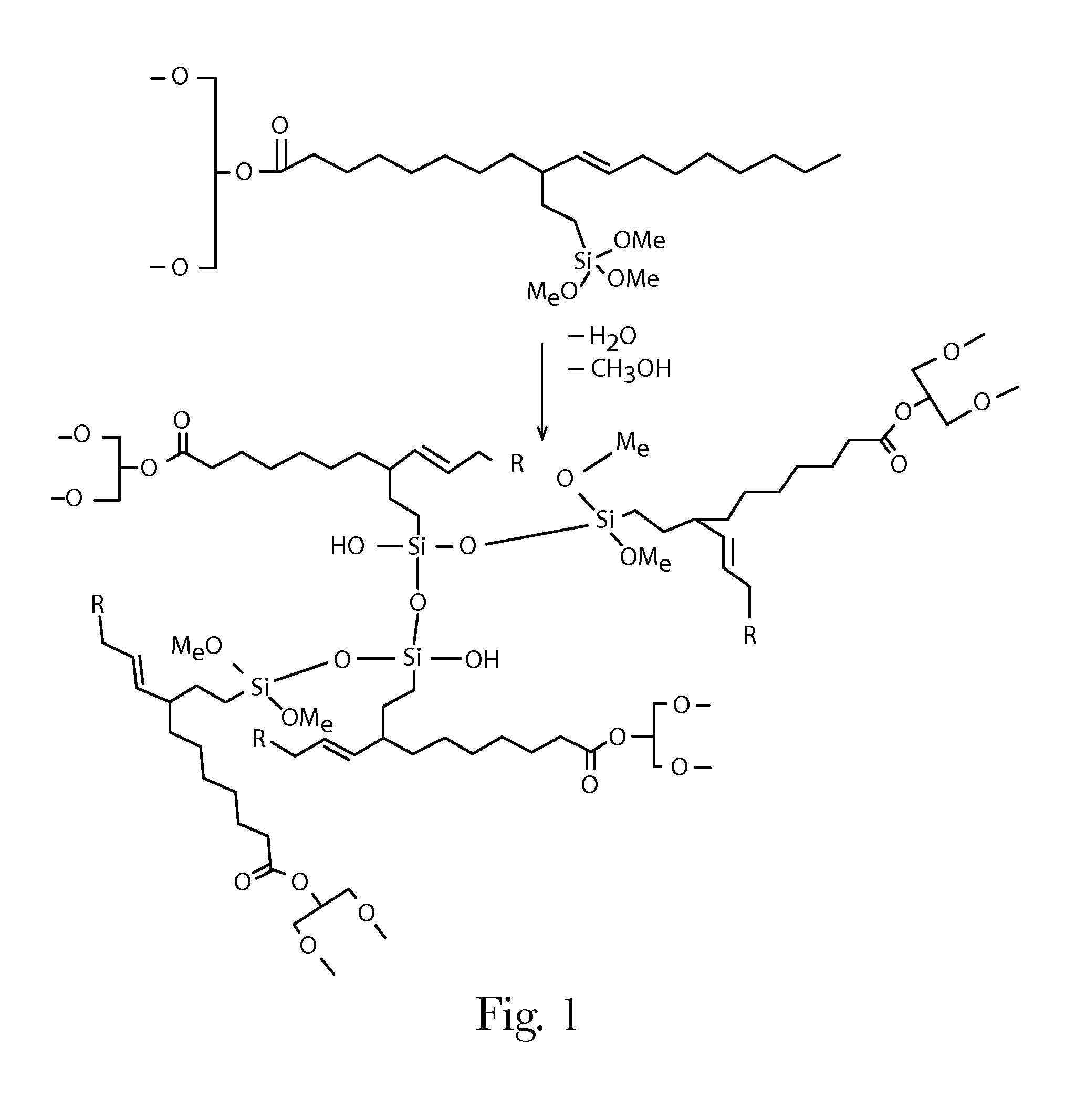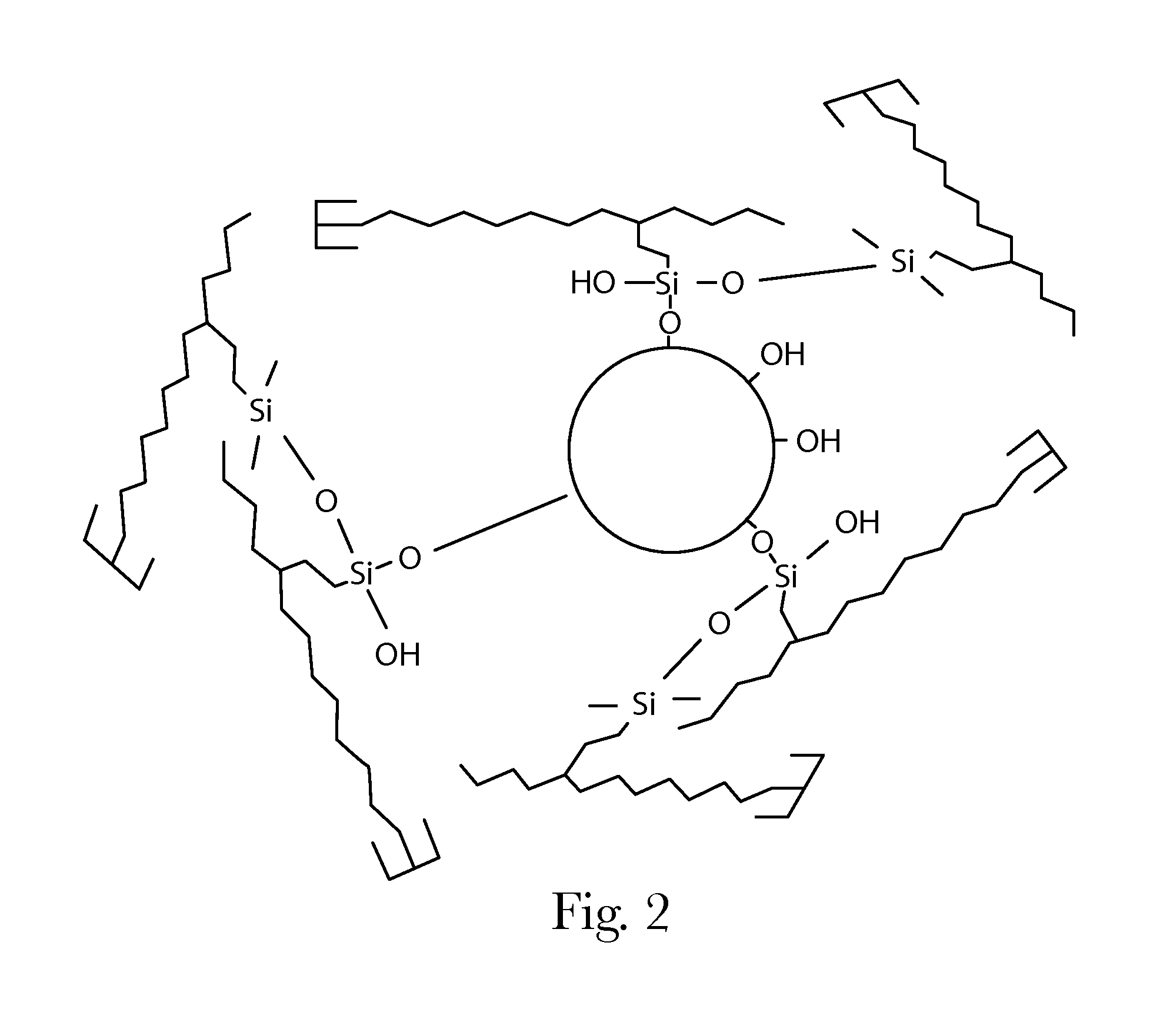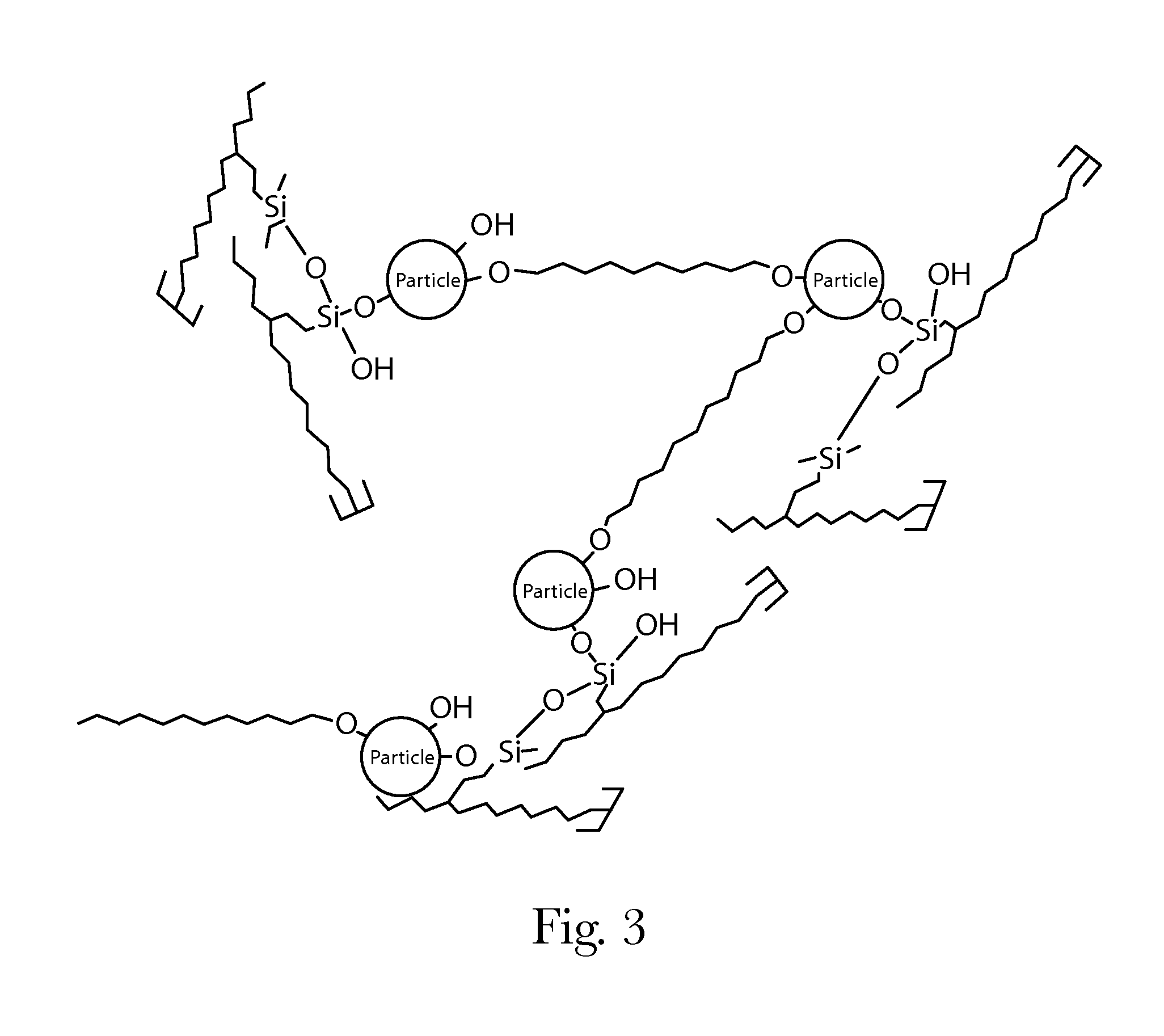Consumer Products Comprising Silane-Modified Oils
a technology of silane and oil, which is applied in the field of consumer products comprising silanemodified oils, can solve the problems of difficult formulation of silicone elastomers, inability to meet the requirements of organic or hydrocarbon (e.g. non-silicone) oils, and inability to meet the requirements of organic or hydrocarbon oils, etc., and achieves strong repellency and lessening softness
- Summary
- Abstract
- Description
- Claims
- Application Information
AI Technical Summary
Benefits of technology
Problems solved by technology
Method used
Image
Examples
example 1
Silylation, Option 1
[0208]Soybean oil (290 g), vinyltrimethoxysilane (246 g) and 2,5-bis(tert-butylperoxy)-2,5-dimethylhexane peroxide (LUPEROX 101) initiator (2.90 g) were mixed in a closed flask. The mixture was pumped using a nitrogen blanket into a 2 L Parr hydrogenator (from Parr Instrument Company, Moline, Ill., USA) that was purged with nitrogen for 5 minutes prior to the introduction of the reaction mixture to ensure an anhydrous atmosphere. The temperature of the reactor was set to 240 deg. C. and the agitation was kept at 200 rpm in order to mix the reactants and distribute heat uniformly in the system. The silylated soybean oil reaction product after 10 hours of reaction time was collected.
example 2
Silylation, Option 2
[0209]In a 2 L Parr 4520 high pressure reactor equipped with overhead stir motor and thermocouple temperature control was placed soy oil (290 g), vinyltrimethoxysilane (246 g) and Luperox 101 (2,5 bis-(tert-butyl peroxy)-2,5-dimethylhexanediperoxide, 2.90 g) initiator. The reaction was heated at 225° C. for 24 h, and then cooled to RT.
[0210]On average, silylated soybean oils were synthesized using 1:1, 2:1 and 3:1 molar ratios of VTMOS to soybean oil. These yielded an average degree of silylation of the oil of 0.7, 1.5 and 2.4 moles of silyl-groups per mole of oil, respectively.
[0211]On average, silylated abysinian oils synthesized using 1:1 and 2:1 ratios of VTMOS to Abyssinian oil yielded an average degree of silylation of the oil of 0.8 and 1.3 moles of silyl-groups per mole of oil, respectively.
[0212]On average, silylated high-oleic soybean oil synthesized using 1:1 and 2:1 ratios of VTMOS to high-oleic soybean oil yielded an average degree of silylation of t...
example 3
Removal of Excess Reagent from Silylation Reactions
[0215]Excess silylating reagent was removed by placing crude reaction product on a rotary evaporator and stripping under vacuum (0.1-10 mmHg) at approximately 80° C. for 3-5 hrs.
PUM
| Property | Measurement | Unit |
|---|---|---|
| temperature | aaaaa | aaaaa |
| weight | aaaaa | aaaaa |
| hydrolysable | aaaaa | aaaaa |
Abstract
Description
Claims
Application Information
 Login to View More
Login to View More - R&D
- Intellectual Property
- Life Sciences
- Materials
- Tech Scout
- Unparalleled Data Quality
- Higher Quality Content
- 60% Fewer Hallucinations
Browse by: Latest US Patents, China's latest patents, Technical Efficacy Thesaurus, Application Domain, Technology Topic, Popular Technical Reports.
© 2025 PatSnap. All rights reserved.Legal|Privacy policy|Modern Slavery Act Transparency Statement|Sitemap|About US| Contact US: help@patsnap.com



